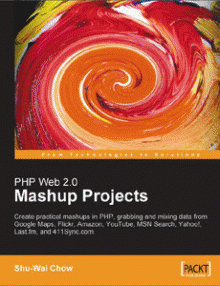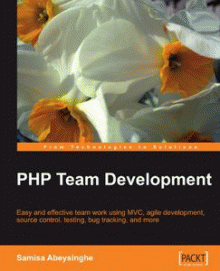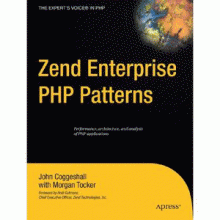AJAX and PHP: Building Responsive Web Applications [New links]
AJAX and PHP: Building Responsive Web Applications by Cristian Darie
Publisher: Packt Publishing (March 10, 2006) | 284 pages | ISBN: 1904811825 | PDF (+Source code) | 6 MB
AJAX and PHP: Building Responsive Web Applications is the most practical and efficient resource a reader can get to enter the exciting world of AJAX. This book will teach you how to create faster, lighter, better web applications by using the AJAX ingredients technologies to their full potential. Assuming a basic knowledge of PHP, XML, JavaScript and MySQL, this book will help you understand how the heart of AJAX beats and how the constituent technologies work together. This book is written web developers with a basic knowledge of PHP, XML, JavaScript and MySQL.Publisher: Packt Publishing (March 10, 2006) | 284 pages | ISBN: 1904811825 | PDF (+Source code) | 6 MB
After teaching the foundations, the book will walk you through numerous real-world case studies covering tasks you ll be likely to need for your own applications: * Server-enabled form-validation page * Online chat collaboration tool * Customized type-ahead text entry solution * Real-time charting using SVG * Database-enabled, editable and customizable data grid * RSS aggregator application * A server-managed sortable list with drag&drop support using the script.aculo.us JavaScript toolkit
The appendices guide you through installing your working environment, using powerful tools that enable debugging, improving, and profiling your code, working with XSLT and XPath.
Chapter 1: AJAX and The Future Of Web Applications is an initial incursion into the world of AJAX and the vast possibilities it opens up for web developers and companies, to offer a better experience to their users. In this chapter you ll also build your first AJAX-enabled web page, which will give you a first look of the component technologies.
Chapter 2: Client-Side Techniques with Smarter JavaScript will guide you through the technologies you ll use to build AJAX web clients, using JavaScript, DOM, the XMLHttpRequest object, and XML. While not being a complete tutorial for these technologies, you ll be taken to the right track of using them together to build a solid foundation for your future applications.
Chapter 3: Server-Side Techniques with PHP and MySQL completes the theory foundation by presenting how to create smart servers to interact with your AJAX client. You ll learn various techniques for implementing common tasks, including handling security and error handling problems.
Chapter 4: AJAX Form Validation guides you through creating a responsive, modern form with real-time validation based on server data.
Chapter 5: AJAX Chat presents a simple online chat that works exclusively using AJAX code, without Java applets, Flash code, or other specialized library, as most chat applications work these days.
Chapter 6: AJAX Suggest and Autocomplete builds a Google-suggest like feature, that helps you find PHP functions, and forward you to the official help page for the chosen function.
Chapter 7: SVG (Scalable Vector Graphics) is a text-based graphics language that can be used to draw shapes and text. (SVG is supported natively by Firefox 1.5, and requires a SVG plugin with other browsers). In this case study you learn how to implement a realtime charting solution with AJAX and SVG.
Chapter 8: AJAX Grid teaches you how to build powerful updatable data grid. You ll learn how to parse XML documents using XSLT to generate the looks of your grid.
Chapter 9: AJAX RSS Reader uses the SimpleXML PHP library, XML and XSLT, to build a simple RSS aggregator.
Chapter 10: AJAX Drag and Drop is a demonstration of using the script.aculo.us framework to build a simple list of elements with drag&drop functionality.
Appendix A: Configuring Your Working Environment teaches you how to install and configure the required software: Apache, PHP, MySQL, phpMyAdmin.













